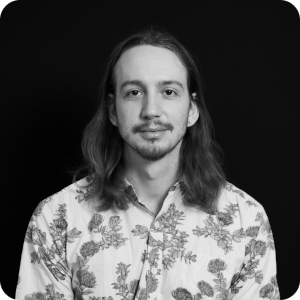My Research
Current Work
My current research is on atmospheric tomography in a few different forms. First, I am currently working on designing and building a new SCIntillation Detection And Ranging (SCIDAR) instrument that is currently planned to go on the University of Hawaii 2.2m telescope on Maunakea. This instrument will measure the vertical profile of the atmospheric turbulence with high vertical resolution (~300-500 meters depending on altitude) on a nightly basis. Such data will aid the design and operation of future adaptive optics systems, as well as provide critical data for turbulence forecasting that helps determine observation priorities at every telescope.
Second, I am also working on a new approach to controlling tomographic adaptive optics systems. The goal is to combine wavefront sensor data with external information on the wind profile to increase the amount of information about the 3D turbulence volume we can extract from the wavefront sensor slopes. My current approach makes use of principles derived from predictive Fourier control, which would mean successful “temporal tomography” would not only reduce tomographic reconstruction errors, but temporal lag errors as well. Ultimately, I want this work to reduce the total number of guide stars required to do tomographic wavefront reconstruction, enabling more wide spread adoption of these systems through reduced cost and increased sky coverage.
I also spend some helping supervise students in detector characterization. We have looked at a variety of brand new scientific CMOS detectors, measured their read noise, dark current, gain values, and linearity to determine their suitability for use in astronomical instruments.
Past Work
As a Grad Student
In addition to working on the first steps of my temporal tomography work mentioned above, I also worked on a few other projects as a graduate student. First, I started off my research in graduate school working on determining the feasibility of using a sodium laser guidestar in the day time, the goal was to determine what filters were capable of reducing the sky background by enough to maintain a reasonable signal to noise ratio on the slope measurements. This work had applications for both solar and nighttime observatories. Nighttime observations using laser guide star based AO systems need to spend time each night calibrating their systems before beginning observations, by using the filters tested in our work we found that observatories could shift these calibrations to the twilight hours, saving the night time purely for observational work. The next project I worked on was an observational project looking for SO2 molecules in massive young stellar objects. We used high resolution mid-infrared spectra to measure the abundance of these molecules, and found evidence that suggested the solution to the sulfur budget problem lies in difficult to observer sulfur allotropes.
Finally, there was my dissertation that was split into two halves. The first half of which was on the first steps towards developing the temporal tomography mentioned above. The second half was on measuring the rotation periods of M dwarf stars in the open cluster M67. This work provided a sample of low mass stars with precisely known ages (4 Gyr) that could serve as benchmarks for calibration of existing spin down models from the literature. I found that only one model provided accurate predictions for rotation periods of M dwarf stars, core-envelope decoupling theory. Given the importance of accuracy for these rotation periods, I spent a long time ensuring data quality and developing tests to verify our results, as these rotation periods were derived from light curves with only ~130 samples over the course of ~3 years.
As an Undergrad
Apologies, this page is still under construction. But briefly, I worked on projects spanning several different fields: working in modelling plankton populations in the ocean through numerical integration of differential equations, classifying water masses in the Southern Ocean to investigate teleconnections with other weather events across the globe, creating a test set up to automatically measure the linearity of circuitry bound for the Large Hadron Collider upgrade that was being done at the time, and detector characterization for the guide cameras of the Dark Energy Spectroscopic Instrument.
